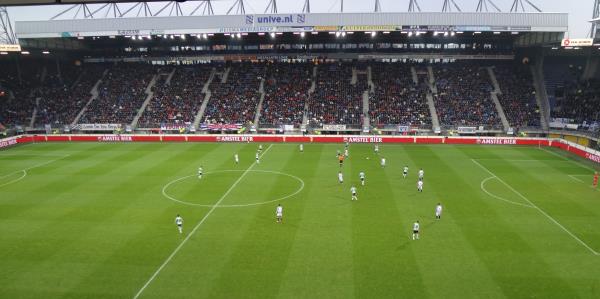
The Dutch Eredivsie is the first of Europe’s major leagues to finish. We have once more collected the attendances and will present you our findings below.
We will be a bit more to the point than last year, when we presented our conclusions in an extensive article, and instead just keep to a few bullet points followed by the charts.
These are our findings:
- The Eredivisie recorded a modest attendance growth of +0.62% to reach an average of 19,636 visitors per match. This growth, however, was primarily a function of the promoted clubs adding more spectators than the clubs that relegated. The 16 teams that played Eredivisie in both seasons noted a decline in attendances of -1.35 % [chart 1].
- Things don’t look good at all at club level, where 12 out of 16 clubs recorded declines in attendances. ADO Den Haag, VVV Venlo, and, surpisingly considering their excellent season, FC Utrecht provided the worst figures with all declines in the double digits. Holland’s big clubs were the exception and did relatively well [chart 2 and 3].
- If it comes to filling up stadiums, the province of Overijssel is king. The three clubs with the highest fill rate, i.e. Heracles Almelo, FC Twente, and PEC Zwolle all come from this north-eastern province. Traditional always-sell-outs like Groningen, Heerenveen, and NEC have dropped the ball this season and witnessed increasing numbers of empty seats [chart 4].
- Overall, 87.9 % of all available seats were filled this Eredivisie season and 29.4% of all matches sold out, which is significantly lower than last year’s 37.3% [chart 5].
- With more free capacity becoming available, logic states that attendances should move up and down more, which we see has indeed been the case in the Eredivisie this season. Whereas last season’s attendances typically moved 8% up or down from one match to the other, this has increased to 9% this season. ADO Den Haag’s fans are the most fickle with typical movements of 20% up or down, ranging from a high of 14,009 versus Ajax to a low of 8,254 versus Roda JC [chart 6].
- Holland’s “Big 3” were, as usual, the teams that drew the biggest crowds away from home with hardly any other team causing notable attendance bumps on the road. ADO Den Haag followed up on previous seasons by once again being the least appealing club to come to town [table “” not found /]
.
It is hard to draw firm conclusions from this data, but it is clear that the Eredivisie is in a bit of a rough spot if it comes to attendances. No wonder, of course, considering the continuing poor economic environment, which has also resulted in various new stadium projects and developments having stalled.
That’s not to say that the Eredivisie is in a bad place – their crowds are far superior to those in comparable medium-sized leagues such as Portugal, Russia and Belgium, and on a similar level as those in France.
Whether attendances will decline further in the upcoming years or bounce back up again is impossible to predict, but one expects attendances to keep hovering around present levels. Real gains can only be made again once Dutch clubs attract back the neutral football fans that have been scared away with club card and safety requirements and when renewed economic growth frees up the finances for another round of stadium development.
Chart 1: league attendance average 2012-13 vs 2011-12 (growth percentage in brackets)
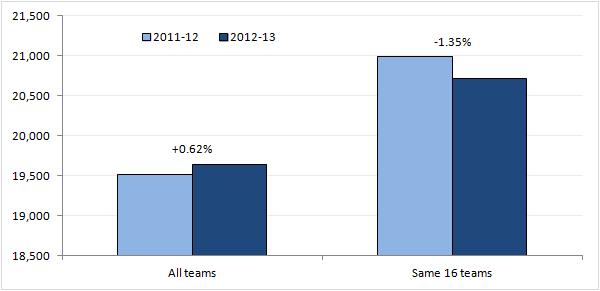
Chart 2: club average attendances and ranking 2012-13.
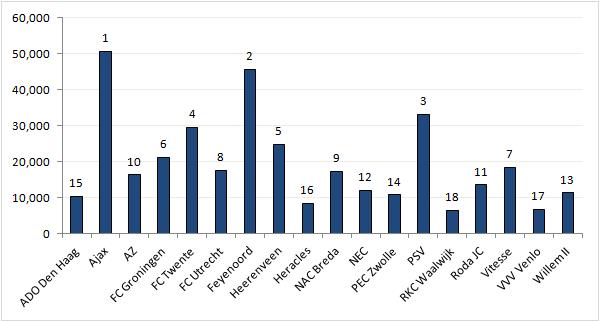
Chart 3: club average attendances 2012-13 vs 2011-12 (growth percentage in brackets)
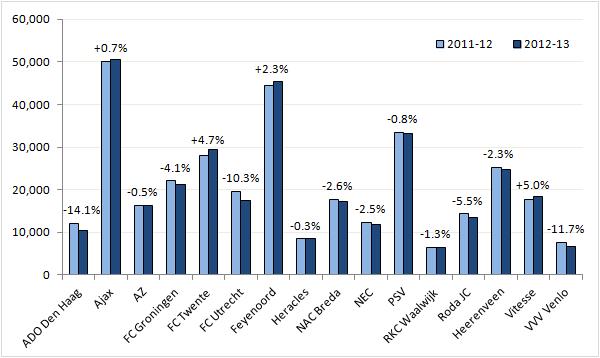
Chart 4: club fill rates 2012-13 (average attendance divided by stadium capacity)
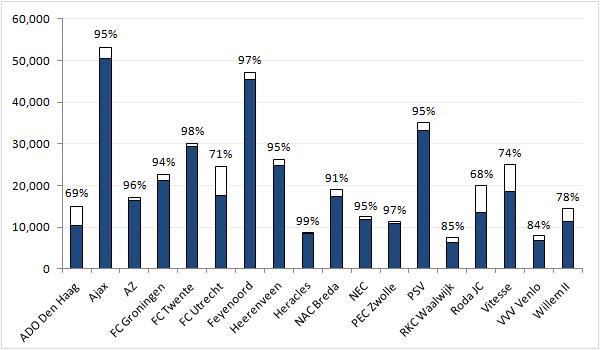
Chart 5: number of sold out matches 2012-13 vs 2011-12 (sell out = fill rate of 97% or higher).
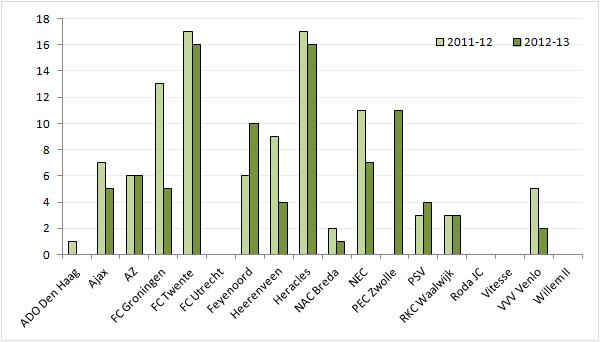
Chart 6: volatility of attendances (average attendance movement from one match to the next).
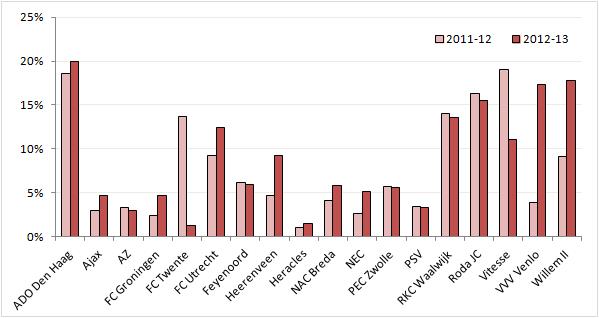
Table 1: appeal of clubs away from home (fill rate, position compared to other clubs, and extra spectator draw in absolute numbers)*
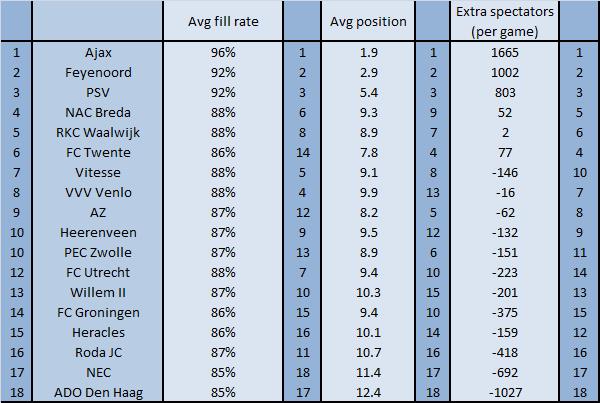
* read more about the methodology of above table here.